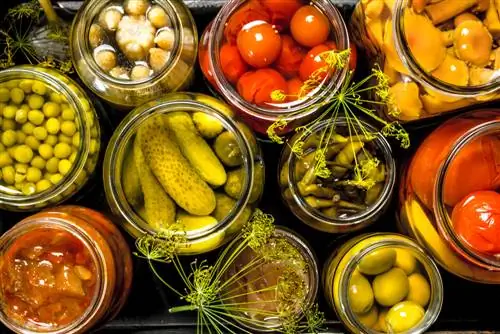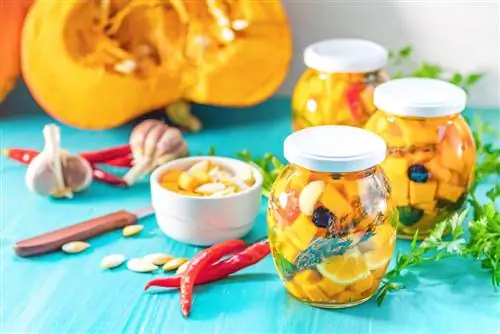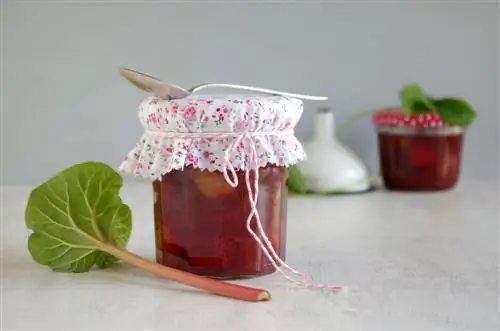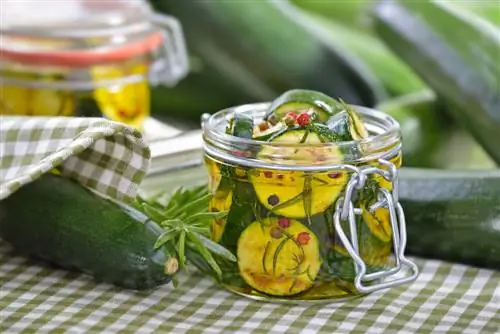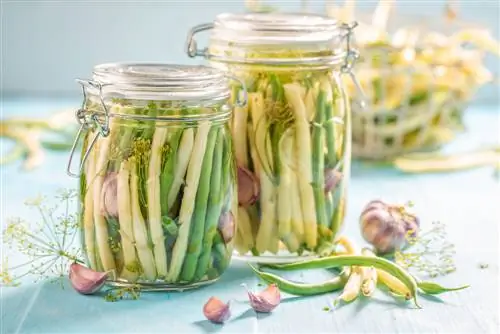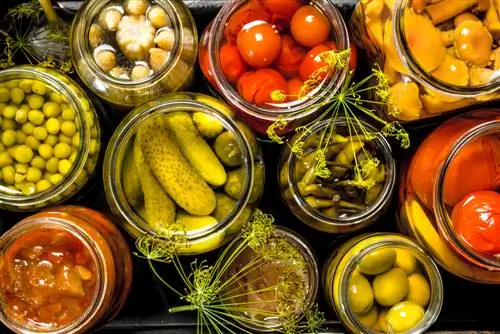- Author admin [email protected].
- Public 2023-12-25 17:45.
- Last modified 2025-01-23 11:21.
If vegetables are available cheaply at harvest time or there are lots of zucchini, cucumbers and pumpkins ripening in the garden, you need to consider how all the fruits can be preserved. In addition to freezing, preserving vegetables is a worthwhile method of being able to use homemade canned goods even in winter.
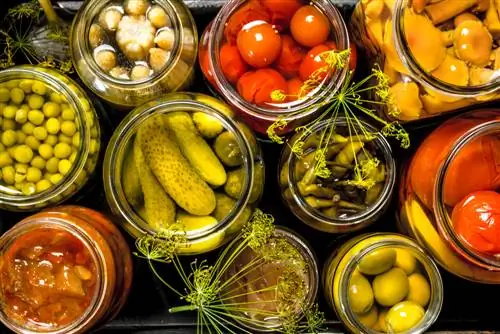
How can I preserve vegetables?
To preserve vegetables, you can preserve them: Wash and chop the vegetables, put them in sterilized jars, add some water, s alt and spices, and close the jars. Preserving is done either in the preserving machine or in the oven.
Utensils for preserving
If you regularly preserve vegetables and fruit, you should get the following equipment:
- Mason jars, with glass lid and rubber ring as well as metal clips for short-term closure
- Jars with screw caps
- Clamp glasses with rubber ring
Mason jars are suitable for preserving vegetables, such as beans, cabbage, peppers, onions, etc.
Jars with screw caps are suitable for jam, but also for pickling cucumbers, onions, peppers, chili etc.
The clamp jars are used for preserving tomato puree, mixed pickles, cucumbers, pumpkin or zucchini, etc. For large quantities, an automatic preserving machine is worthwhile. You can also cook in the oven, but there is room for more glasses in the large kettle.
Hygiene rules when preserving
I'm sure everyone has had their glass of Weck spoiled at some point. This is usually due to a lack of hygiene. Glasses are always rinsed and sterilized before use, i.e. placed in boiling water for ten minutes. Damaged lids and rubber rings will be replaced.
How to properly preserve?
- First wash the vegetables, remove the flowers and stems, as well as pressure and rotten spots.
- Crush the vegetables to your taste and cut into cubes, rings or sticks.
- Put the vegetables in the glass, pour in some water and add some s alt and possibly spices.
- Seal the jars. Dry the edges well and screw on the lids. With the mason jar, the rubber ring is placed on the edge and then the lid. This is closed with a metal clip. The swing-top jar is closed with the wire frame that is attached around the lid.
- Place the jars in the canner, leaving enough space between them.
- Pour enough water into the pot so that 3/4 of the glasses are submerged.
- Heat the canner. When it comes to soaking time, follow the manufacturer’s instructions. Depending on the device and the vegetables, preserving at a temperature of 75 to 100 can take up to two hours.
If you only want to preserve a few jars, you can also use your oven.
- Prepare the jars as you would for the canner.
- Preheat the oven, about 150 degrees for fruit and 190 degrees for vegetables.
- Place the glasses in the drip pan and pour enough water so that the glasses are about 2 cm in the water.
- If the liquid in the glasses begins to bubble, turn off the oven but leave the glasses in the warm oven for another 30 minutes.
Take the food out of the oven/preserver and let it cool completely under a tea towel.

